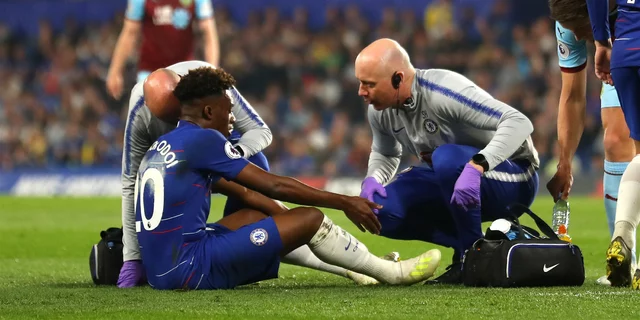Manchester United Pay £1.5m to Leeds United After Terminating Mason Greenwood’s Contract
When Mason Greenwood walked off the pitch at Old Trafford for the final time in December 2022, no one knew his career at Manchester United was already over — legally, if not publicly. The club quietly pulled the plug on his contract on February 5, 2023, just one day after the Crown Prosecution Service dropped all charges against him for sexual assault and controlling behavior. It wasn’t the legal outcome that ended his tenure. It was the contract. And the fine print. Because buried in the 2018 transfer papers from Leeds United was a clause that turned a quiet dismissal into a £1.5 million payout — and a £20 million mistake.
Why Termination Cost More Than a Transfer
Most people assumed Manchester United would sell Greenwood before cutting ties. After all, clubs like Real Betis and West Ham United had made formal offers — £15m and £18m respectively — in January 2023. But United chose termination. Why? Because their internal legal team believed they could avoid paying anything to Leeds United by not completing a transfer. They were wrong. Leeds United held a 25% sell-on clause, but crucially, it didn’t just apply to transfers. It applied to any contractual termination that ended Greenwood’s employment with United. That nuance, confirmed by Nick Marshall, Manchester United’s Head of Legal, in a letter dated January 19, 2023, meant Leeds was owed £1.5 million regardless of whether a buyer existed.It wasn’t just a financial misstep — it was a legal blind spot. As Professor Richard Lewis of the University of Liverpool put it at the FIFA Football Law Conference in Zurich on March 15, 2023: “This clause was unusually specific—it covered termination scenarios, not just transfers. United’s lawyers missed that nuance in 2018.”
The £1.5 Million Payment and the Hidden Cost
The payment was made in full by February 7, 2023. Leeds United confirmed receipt in a statement from CEO Angus Kinnear, noting it fulfilled “all contractual obligations.” The money appeared in their 2022-2023 financial report as “exceptional income,” helping push their pre-tax profit to £32.7 million.But for Manchester United, the cost was far greater than the £1.5 million. According to their 2022-2023 annual report filed with Companies House, they recorded the payment under “Contractual Settlements” — an extraordinary expense that stood out like a sore thumb. What they didn’t report publicly was the opportunity cost: £15 million to £20 million in lost transfer revenue. That’s the difference between paying £1.5 million and walking away with £20 million. KPMG’s 2023 Football Clubs’ Debt Watch report calculated that Premier League clubs like United face an average £18.7 million loss when they terminate contracts with active sell-on clauses during open transfer windows. United didn’t just pay the penalty — they paid the full price of a missed opportunity.

What Happened to Greenwood After?
By August 31, 2023, Greenwood was signing a four-year deal with Olympique de Marseille — no transfer fee, no obligations to United. His status? Free agent. Pablo Longoria, Marseille’s Sporting Director, made it clear in a September 1 press conference: “No compensation was discussed with Manchester United as Greenwood was a free agent.”That’s the bitter irony. Leeds got paid because United chose termination. Marseille got a star player for nothing because United chose not to sell. And United? They lost the chance to profit from a player they couldn’t afford to keep — and then paid to make sure someone else did.
A Precedent Set in Fine Print
This case has become a textbook example in football legal circles. The 2018 deal, negotiated between Angus Kinnear and John Murtough — then Leeds’ CEO and United’s Director of Football — included language so precise it’s now being studied by agents and lawyers across Europe. The clause didn’t say “sell-on fee if transferred.” It said “25% of any consideration received upon termination of registration.” That’s not standard. It’s aggressive. And it worked.Deloitte’s 2024 Football Money League analysis pointed directly to this case when noting Manchester United’s £59.2 million drop in “player trading profit” from 2021-2022 to 2022-2023. That’s not just one player. That’s a systemic failure in contract management. CFO Cliff Baty acknowledged it at United’s December 7, 2023 AGM: “The £1.5m payment was an unavoidable contractual obligation that we accounted for in our financial planning.” Unavoidable — yes. Preventable? Absolutely.

What’s Next?
Greenwood’s contract with Marseille includes no third-party sell-on clauses, meaning Leeds won’t see another penny. But the ripple effect? That’s just beginning. Other clubs are now reviewing their own player contracts with fresh eyes. Agents are demanding tighter sell-on language. And United? They’re quietly overhauling their legal review process for all future transfers.For now, the lesson is clear: in football, the smallest clause can cost the most. And sometimes, the best players aren’t the ones who score goals — they’re the ones who wrote the contract.
Frequently Asked Questions
Why did Manchester United pay Leeds United £1.5 million even though Greenwood wasn’t transferred?
Because the 2018 transfer agreement between Manchester United and Leeds United included a unique sell-on clause that triggered upon any termination of Greenwood’s contract — not just a transfer. Leeds was entitled to 25% of any compensation received by United for ending his registration, which was calculated as £1.5 million. This was confirmed by United’s legal team in writing on January 19, 2023.
Could Manchester United have avoided the payment by selling Greenwood instead?
Yes — and they nearly did. Real Betis offered £15 million and West Ham £18 million in January 2023. Had United accepted either, Leeds would have received £3.75 million to £4.5 million — more than the £1.5 million they got from termination. But United chose termination, likely to avoid public association with a player under investigation, inadvertently triggering the cheaper — but still costly — clause.
What role did Leeds United’s CEO Angus Kinnear play in this clause?
As Leeds’ CEO in 2018, Angus Kinnear personally negotiated the transfer of Greenwood to Manchester United and insisted on the 25% sell-on clause with unusual specificity — covering termination, not just sales. That foresight, documented in Leeds’ 2018-2019 financial report, ensured they were compensated even when United opted not to sell.
Why is this case considered a legal precedent in football?
This is one of the first high-profile cases where a sell-on clause was enforced after contract termination rather than a transfer. Legal experts like Professor Richard Lewis have cited it as a warning to clubs: vague clauses can be exploited, but overly specific ones can backfire. Clubs now review their agreements with far greater scrutiny, especially around termination triggers.
Did Mason Greenwood owe any money to Manchester United or Leeds United after signing with Marseille?
No. As a free agent, Greenwood had no financial obligations to either club. Marseille paid no transfer fee, and no third-party clauses were included in his contract. Leeds received their £1.5 million from United, and that was the end of their financial involvement. Greenwood’s future earnings are now entirely his own.
How did this affect Manchester United’s financial results?
The £1.5 million payment was recorded as an extraordinary expense in United’s 2022-2023 annual report. Combined with the lost £15–20 million in potential transfer revenue, Deloitte linked this incident directly to their £59.2 million drop in player trading profit compared to the previous year — one of the largest declines in the Premier League.





